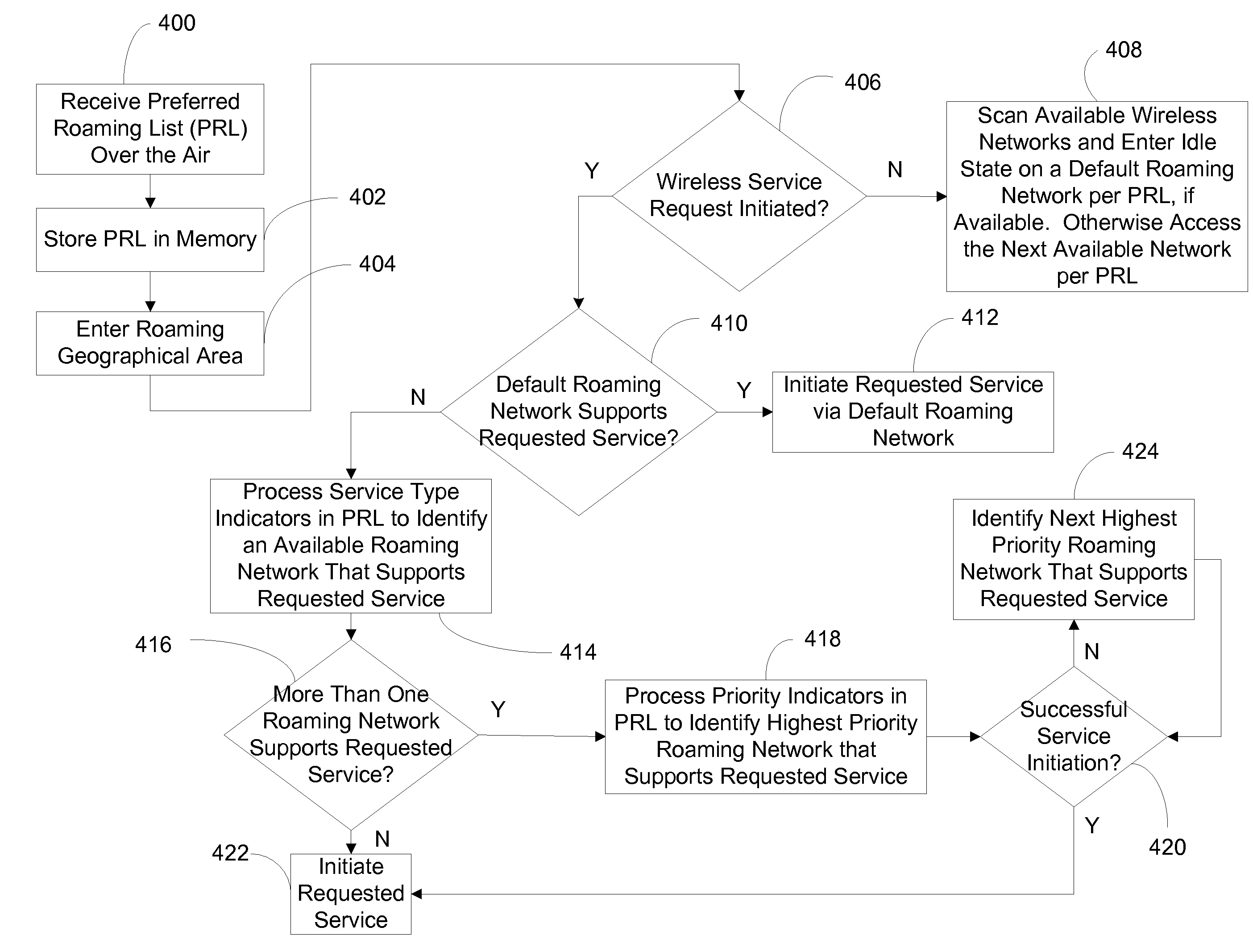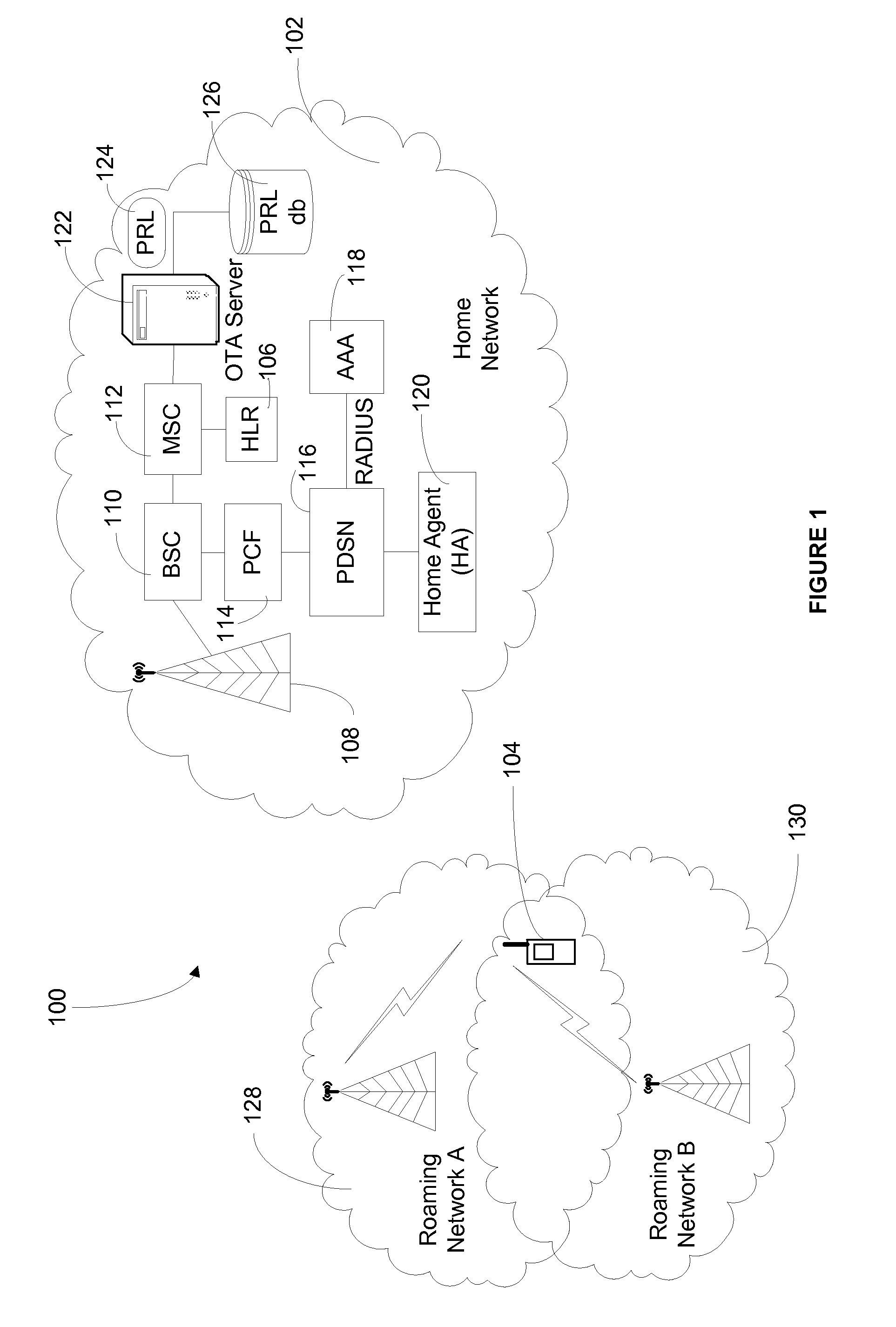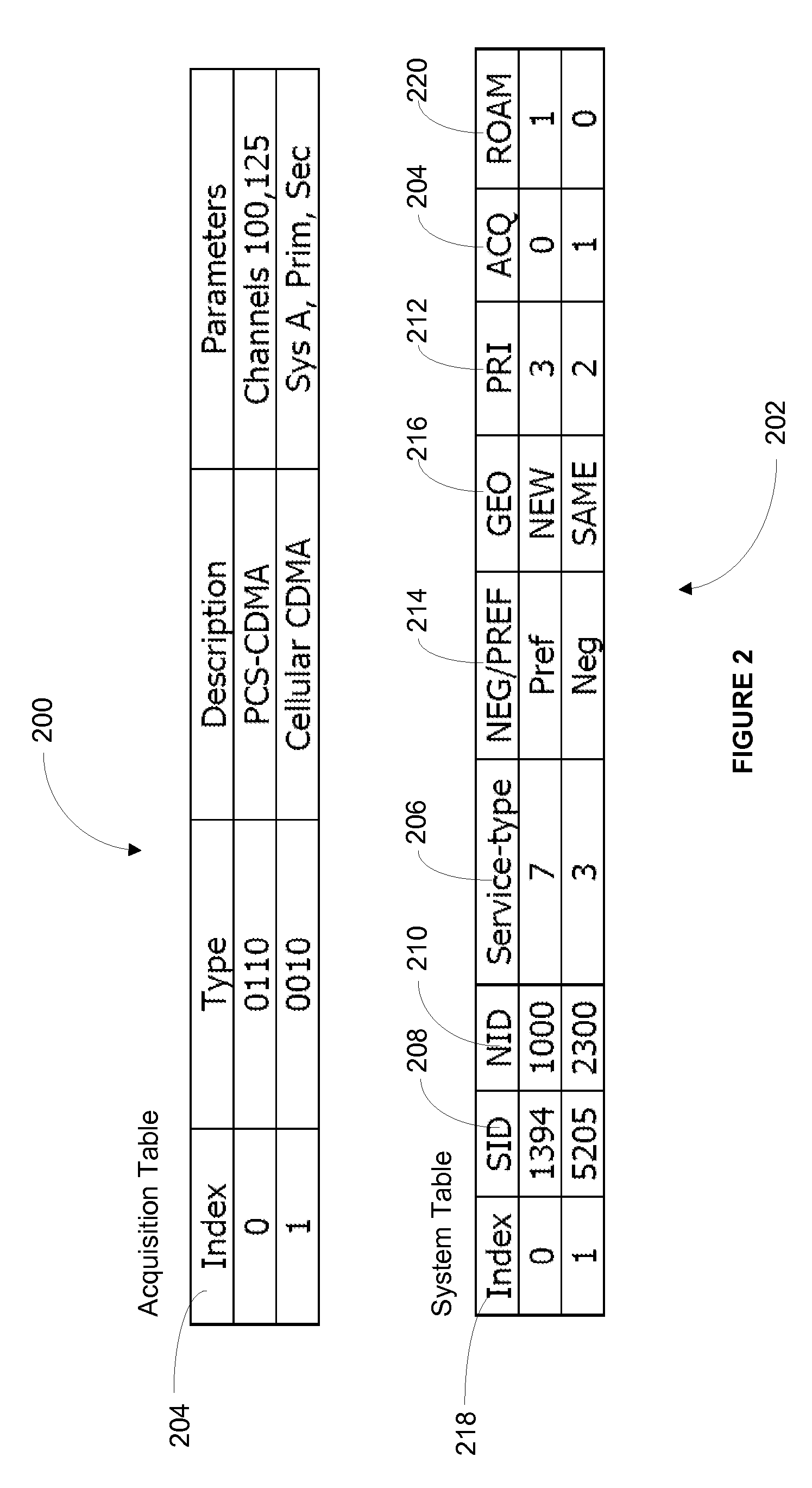System selection based on service-specific preferred roaming list in a wireless network
a wireless network and service-specific technology, applied in the field of wireless communications, can solve the problems of uniform availability of various services, failure of service initiation on roaming networks, and complicated access to various wireless services during roaming
- Summary
- Abstract
- Description
- Claims
- Application Information
AI Technical Summary
Benefits of technology
Problems solved by technology
Method used
Image
Examples
Embodiment Construction
[0022]The following examples further illustrate the invention but, of course, should not be construed as in any way limiting its scope.
[0023]Turning to FIG. 1, an implementation of a particular embodiment of the present invention within a mobile environment 100 is shown. To facilitate service-based roaming and ensure selection of an optimum roaming network, a home wireless network 102 communicates an improved Preferred Roaming List (PRL) that includes service type and service priority indicators for a plurality of roaming networks to a mobile device 104. In this embodiment, the home wireless network 102 operates in accordance with a CDMA2000 specification and includes data and location based services delivered via one or more data access protocols, such as EV-DO, EV-DV or the like. Other embodiments include a home wireless network 102 complying with one or more of WCDMA, UMTS, GSM, GPRS, EDGE, WiFi (i.e., IEEE 802.11x), WiMAX (i.e., IEEE 802.16), or similar telecommunication standar...
PUM
 Login to View More
Login to View More Abstract
Description
Claims
Application Information
 Login to View More
Login to View More - R&D
- Intellectual Property
- Life Sciences
- Materials
- Tech Scout
- Unparalleled Data Quality
- Higher Quality Content
- 60% Fewer Hallucinations
Browse by: Latest US Patents, China's latest patents, Technical Efficacy Thesaurus, Application Domain, Technology Topic, Popular Technical Reports.
© 2025 PatSnap. All rights reserved.Legal|Privacy policy|Modern Slavery Act Transparency Statement|Sitemap|About US| Contact US: help@patsnap.com



